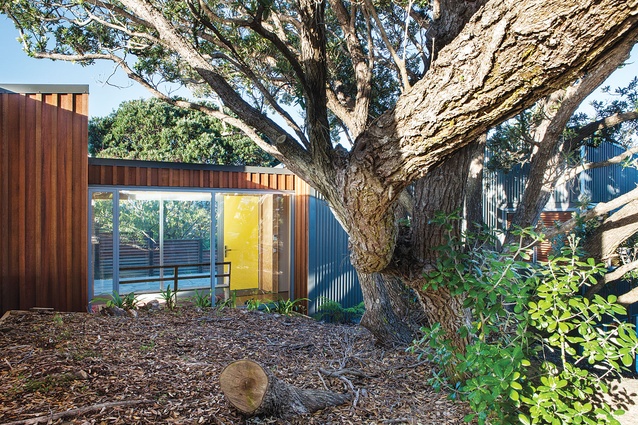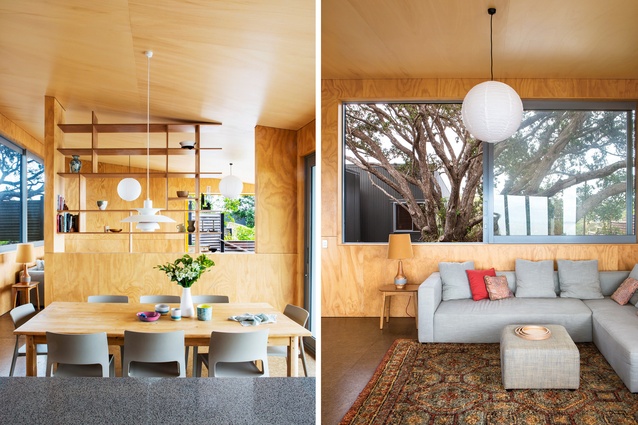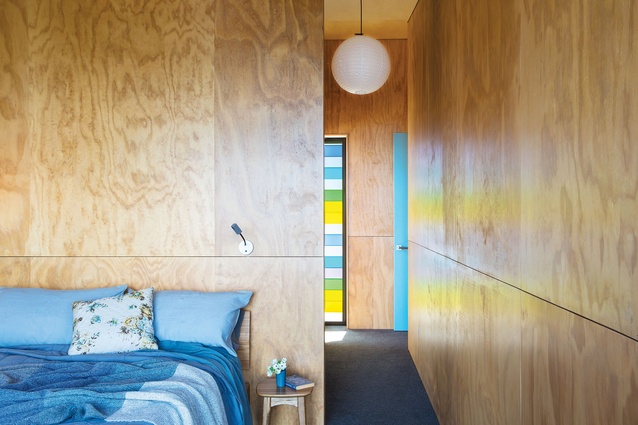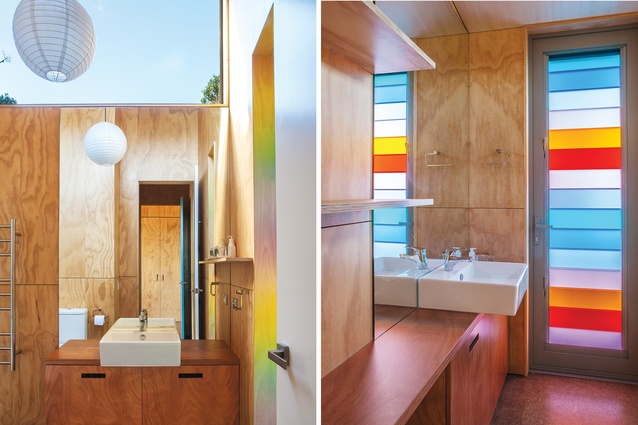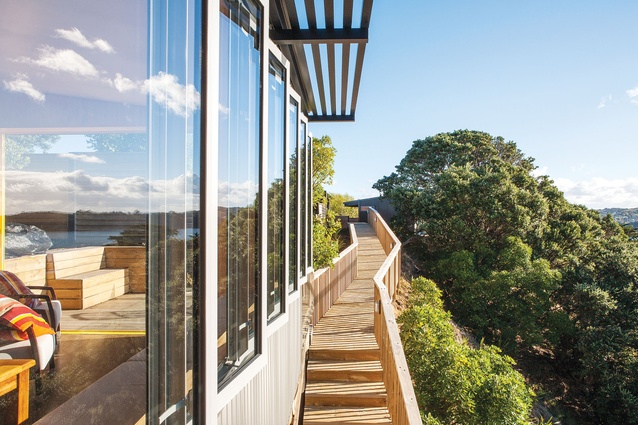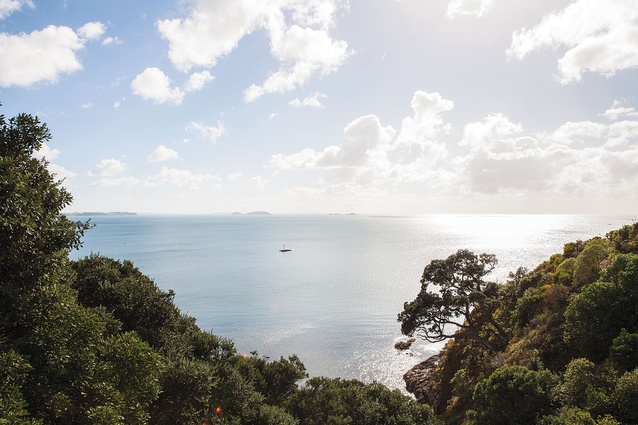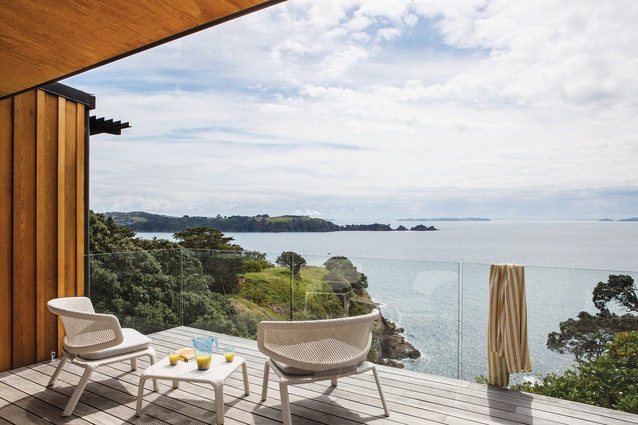The bridge to somewhere
Whether on foot or four wheels, it’s a trek to reach the end of a dramatically steep and seemingly endless driveway, which takes up most of an awkward section at Sandy Bay on Waiheke Island. But it has its rewards. The home awaiting at the end rests on a plateau with 180° views of the bay and Hauraki Gulf. And when the sounds of the bush recede, you can hear the waves striking the rocks at the base of the cliff below.
The home, a getaway for a semi-retired Auckland couple, draws its dogleg footprint from the 2500m² site. The main house, which is constructed around a pohutukawa tree, and generous one-roomed sleep-out are situated on either side of a deep gully atop a cliff. The dwellings are linked by a timber bridge-like walkway that journeys along the bush-clad cliff. Although a recent build, the home is firmly planted within its surrounds and ensconced in native bush.
From the entrance and living room, the line of sight leads out to an internal courtyard that wraps around the trunk of the old pohutukawa. Designed by Box Living, the dwelling is a retreat for the owners who wanted to spend a significant amount of time away from city life. They were happy for the house to be constructed from robust materials, such as a dark tin cladding, which is softened by cedar accents.
Inside, despite its relatively large 150m² footprint, the home emanates relaxed Scandinavian warmth derived from its materials. There is no plasterboard in the home – every wall is lined with plywood. Hoop pine is used on the ceilings, while the walls are clad in traditional ply, and gaboon ply is used for the kitchen and bathroom cabinetry. The floors offer an interesting counterpoint to the ply – the architects used the building’s substrate, a material called Strandfloor, and by sanding and varnishing it, they’ve created a cork-like look.
Box Living’s general manager, Dan Heyworth, says the use of different grains also serves to offset the metal cladding of the exterior: “It definitely has a bach-like, tree-house feel, which is what we were aiming for. The clients wanted something that had a relaxed feel; something that was different to their urban home in central Auckland.”
Box Living is both an architectural and construction firm that designs and builds prefabricated houses. “We sit in the middle of the scale between house builders and architects,” says Heyworth. “Box houses use a standard kit of parts and details but the plans and layouts are site specific. This design is totally unique to the site, just like most of our projects.
“The response to this site led to some interesting features, such as the bridge to the studio and the house wrapping around the pohutukawa tree. The clients had input into many elements of this house, including the coloured panels, aluminium joinery and timber finishes,” he adds.
Colour has been used as a clever and striking feature that adds personality and a point of difference to some of the other contemporary structures on the island. The front door is bright yellow, as is some of the aluminium joinery, while interior doors have been painted green, turquoise and magenta. Floor-to-ceiling glass louvres in a rainbow of glass punctuate the house at various points. Like a modern take on a stained-glass window, the effect lends a lovely array of colour to the exterior when the house is lit at night and, when the sun streams in during the day, the bright hues throw bursts of colour onto interior finishings. “The house is true to our Box Living modernist heritage, but the varied colour palette gives it a bit more playfulness,” says Heyworth.
From the main entrance, which is located on the eastern elevation, a small deck faces back to a tree-lined valley. Inside, the two spare bedrooms share this view; one also faces the internal courtyard and pohutukawa tree. The rest of the rooms are located in the other wing of the dogleg footprint. The kitchen and living room enjoy sea views. A harbour-facing deck leads off the dining area and a third outdoor area off the living room looks out to the bridge and beyond.
The sleepout comes complete with a wood burner, kitchenette and bathroom, and has its own glass-balustraded deck and a path down to the beach.
“People are really drawn to this house,” says Heyworth. “From a design perspective, it is successful. It works perfectly with the attributes of the site. But many elements make this house special: the way it wraps around the pohutukawa tree; the views; the timber finishes; built-in cabinetry; and the colour.”

